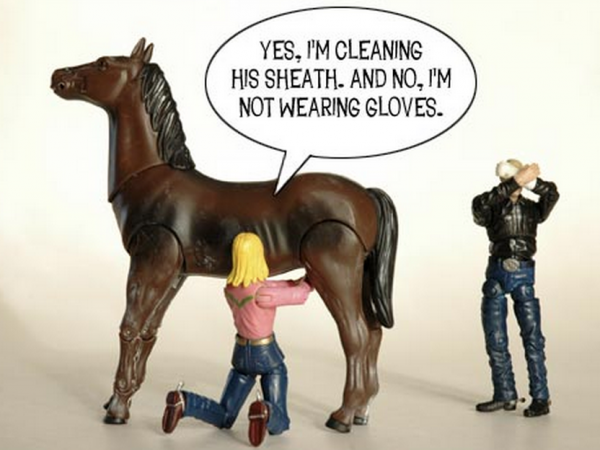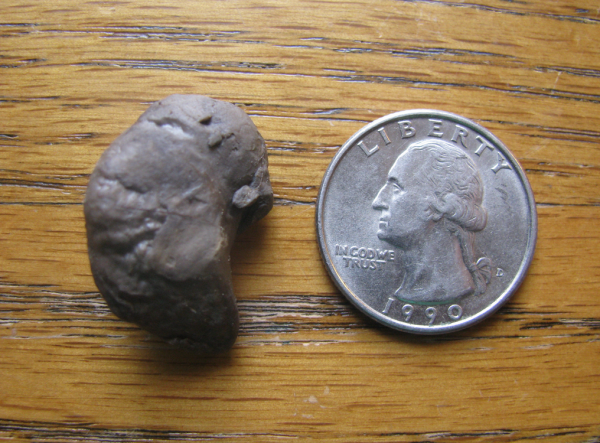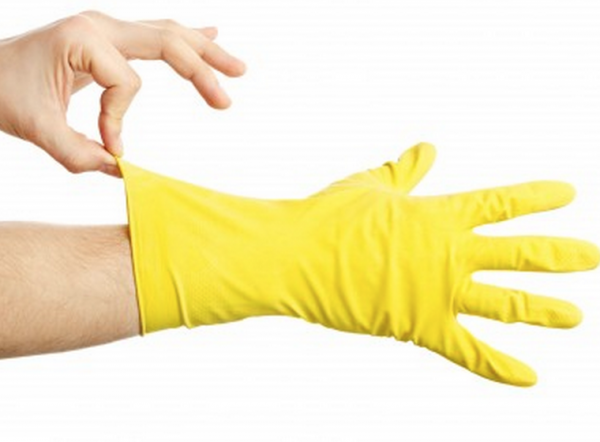Okay. If you own a mare, then this article is not for you. If you own a gelding and clean his sheath daily with postman-like predictability and discipline, then this article is also not for you. (P.S. That’s a lot of sheath cleaning and you’re probably going just a teensy weensy bit overboard. As the old adage goes, “No horse has ever died of a dirty sheath”).
But if you think that sheath cleaning is an activity involving medieval sword maintenance, then reading this article might clear a few things up for you. (Sorry in advance.) The same applies if you think that geldings don’t need sheaths cleaned because horses in the wild don’t need sheaths cleaned. (Side note: geldings are not stallions and therefore they don’t function the same way because they’re missing…well, hopefully you know what.) Lastly, if you are ambivalent or “on the fence” about why sheath cleaning may or may not be necessary, then here are a few compelling reasons why annual sheath cleans are actually a really good idea.

Horse Collaborative does not condone cleaning sheaths without gloves. (Photo via wordpress).
1. Comfort and health are two factors that often go hand in hand. Sheaths are no exception.
As a gelding goes about his days just being a horse, the sebaceous glands that line his sheath are secreting sebum. Sebum then mixes together with dirt to form a black grey “smegma.” Smegma is about as unappetizing as it sounds, either taking the form of black flakes or a stinky tar-like liquid. Over time, smegma accumulates at the urethral diverticulum (a pocket just at the base of the penis). The urethral diverticulum is also sanctuary for other deposits: more dirt, sweat, fat cells, and mineral salts from urine. These bodily byproducts solidify into The Bean. If left unattended, The Bean can grow large enough to interfere with urination, causing serious discomfort for the unlucky gelding. *wincey face*

Bean on the left, quarter on the right…..ouch. Sorry buddy. Sheath happens. (Photo via thinklikeahorse.org)
2. Really dirty sheaths can cause secondary infection, dermatitis, and inflammation.
While these conditions are generally not life threatening, it’s a good idea to practice proactive prevention. Medically speaking, it’s best if your horse has his sheath cleaned once a year. If you can’t keep track of what day it is let alone when his sheath was last cleaned, then just remember that “When the branches grow their leaves, it’s time for cleaning sheaths.”
3. It’s nice to save money and do a sheath clean yourself.
You might even be the person who proudly says to anyone who will listen, “Ialways clean my horse’s sheath by myself.” It’s cool you’re not intimidated by a little smegma. But keep in mind that for more serious diagnostic purposes, a vet can be extremely helpful. They can notice the aberrations indicating a much larger health concern, like Habronema (parasites that cause sores in the penile region) or cancers, such as squamous cell carcinoma. To avoid viewer cringes, you can look up what those look like via Google search on your own.
If this list proceeds in descending order of importance, no pun intended, then a clean sheath is also necessary for the sake of…
4. Aesthetics.
If you hate to see a dirty sheath dropping outside the show ring, or even in it, then sheath cleaning is SUPER IMPORTANT and I’m sure this article is a little bit besides the point for you.
So roll up your sleeves and snap on your rubber gloves, there’s dirty work ahead. And somebody has got to do it.

Ed.’s note: Not all horses are receptive to sheath cleaning procedures. Please exercise utmost caution and be prepared for some rear leg action.


 April 20, 2015
April 20, 2015 


























